New Report Wants to Increase Knowledge About the High North
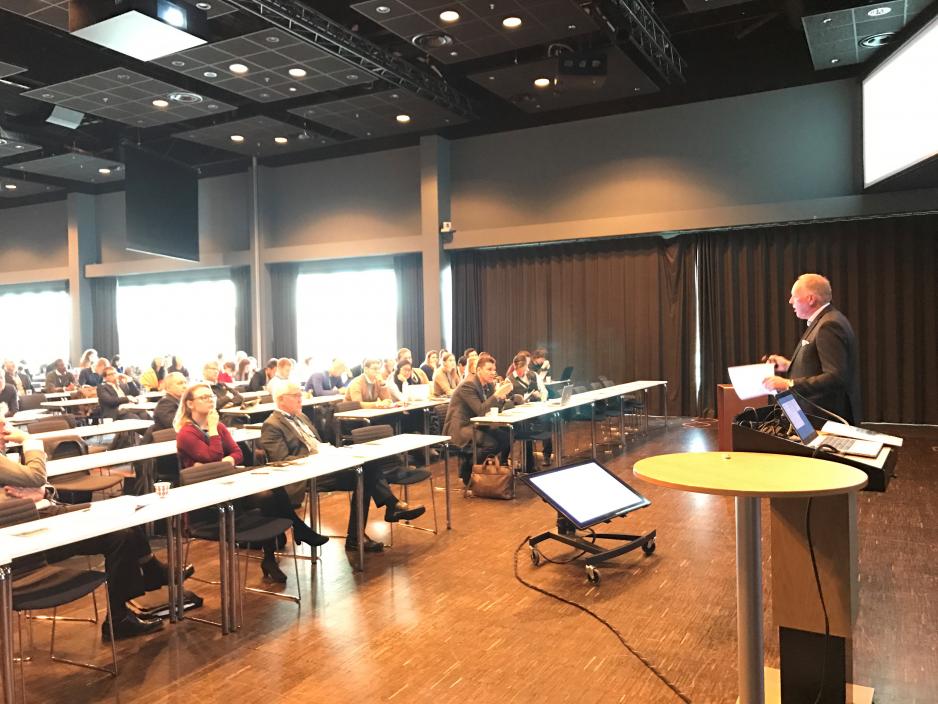
Business Index North shows very clearly that the High North needs investments to realise the economic potential of the region. Dean of Nord University Business School Erlend Bullvåg presented the report at the High North Dialogue conference in Bodø, Norway. (Photo: Linda Storholm)
The High North is fragile, has tremendous opportunities and the countries need training in handling their High North beyond issues of environment and limitations.
- We must define what acting space the High North should have, which services are to be offered and how much autonomy the North should have, says Erlend Bullvåg, project manager for the Business Index North, which was launched recently.
The report covers demography, labor market, innovation and further topics of the northernmost counties in Norway, Sweden and Finland.
The High North of these countries fall short of their respective national averages in most areas, however, the opportunities are also bigger than ever.
Shouts the loudest
Bullvåg’s perhaps biggest concern is the fact that the knowledge about the High North is dwindling.
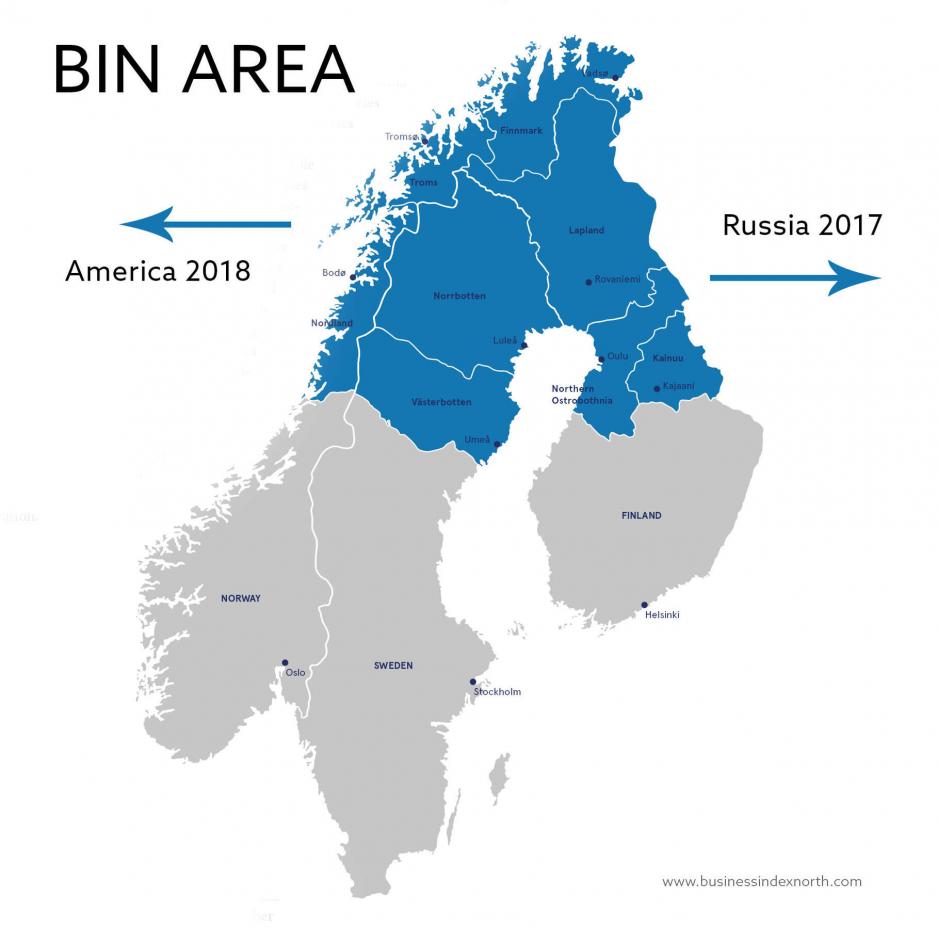
- We see that those who shout the loudest are those who wish to preserves us who live up north. However, not all activity in the north is damaging as such, but limitations to the actors are damaging to the North as a whole, he states.
The numbers appearing in the report are not a pleasant read for someone from the north. Compared with the rest of the Nordic countries, there are too few people living in the north, and those of us who live here have lower levels of education than our national average, we create fewer jobs, value creation in business is smaller and there are too few women around.
Only half speed
Actually, the creating of jobs in the North runs only on half speed compared to the rest of the countries in the North. The share of inhabitants with higher education is five percent lower than the national average, and while the rest of the Nordics have seen an increase in the number of inhabitants under the age of 20, the regions of the North – the so-called BIN area – has seen a 5.9 percent decrease during the same period.
- We must make more babies in the North, says Erlend Bullvåg. In addition to leading the working group behind the Business Index North (BIN), he is dean of the Nord University Business School in Bodø, Norway. Nord University has worked together with a.o. universities in Oulu (Finland) and Luleå (Sweden) in the process of creating the BIN report.
In its first edition, only Norway, Sweden and Finland have been investigated. In next year’s edition, the northern regions of Russia will be included, and in two years, the North American regions will be included too.
Want to lift the North
Erlend Bullvåg says the idea behind the report work is to bring out the special characteristics of the High North when it comes to business, people and interaction.
- The goal is to make these characteristics more visible to the regions themselves, as well as for those who make decisions concerning the High North. We must create knowledge about the opportunities that lie in the North and the direction of the developments in the North, he expounds.
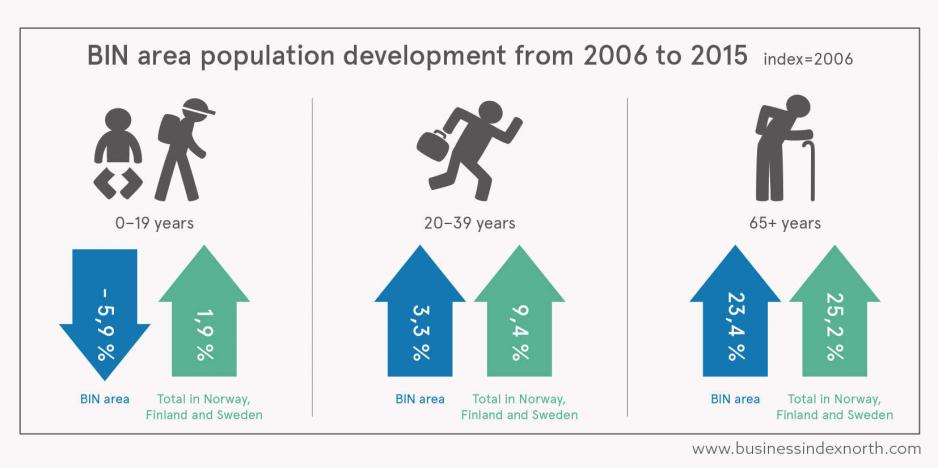
He is also concerned with creating a better knowledge-based foundation of social sciences in the High North. Bullvåg says that so far, a good job has been done in natural sciences. Now it is time to improve in social sciences too.
- Are the communities in the north so different that they stand out?
- Yes, definitely. One of the reasons for why it is important to find out more about this is the fact that we in the north are to manage and sustain many and significant natural resources in a sustainable way – but with fewer inhabitants.
Wants to prevent poor centralized decisions
Bullvåg is passionately concerned with the north being an area in which it is good and attractive to live and operate and through Business Index North, it will be possible to demonstrate the differences that exist to central politicians and decision-makers, so that decisions made centrally will not have detrimental effects on regional businesses or quality of life.
Bullvåg among others refers to how the north needs both more and improved interaction, also on a cross-border level, in order to succeed with good transport solutions and with businesses that need specialized labor force and market.
- The developing of tools often happens in the south, but is that process adjusted to the North, he asks rhetorically.
Russia to be included
While this year’s edition of BIN is concerned with population, labor marked, cooperation, energy production and innovation, next year’s edition will take a closer look on business life in the north.
Funding of the project comes from the Norwegian Ministry of Foreign Affairs and from Nordland County (Norway), and funding is already in place for broadening the geographical scope to include Northern Russia. If Bullvåg’s dream comes true, further funding will provide for including also the regions of North America.
The goal is to cover the entire circumpolar North in the Business Index North.
For even though the differences are conspicuous, the similarities are too: The reason for people living here at all is the vast abundance of natural resources that exists in the north.
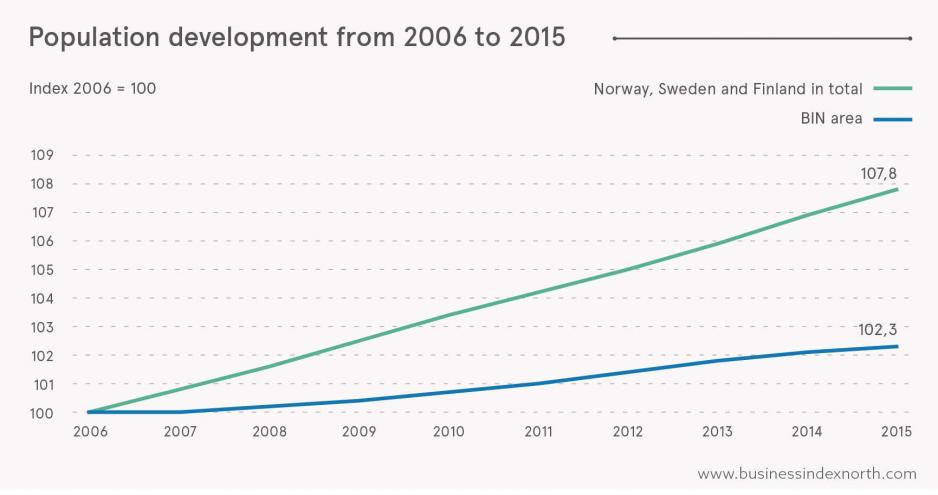
The battery of the Nordics
In the Nordic countries, the High North is the power center of their energy production. Vast amounts of renewable energy is produced through both wind and water.
Under the ground, we find humongous mineral resources, and we have only just started making use of the ocean as a resource. While we have grown the soil for generations, growing in the ocean as our production area has only just begun. In addition, there is the enormous resource constituted by the fish stocks.
In other words, the table is set for the North to contribute to feed the world, bring light to the houses of the south and exporting power-demanding products and metals.
However, the knowledge about the opportunities is not always what it should be. Hence, Bullvåg argues that Business Index North is a good start in bringing out the manifold solutions for creating a living for people.
- What is lacking for the potential in the north to be capitalized?
- In some cases, the combination of resources and knowledge is missing. At other times, we see that knowledge and resources are in place, however, investments or the opportunity to reach the marked is missing. For instance, producing a product meant for export is to little avail if you lack labor force or infrastructure to bring the product to the market, he says.
Vulnerable in different areas
Moreover, even though there are many similarities across the High North, there are also significant differences.
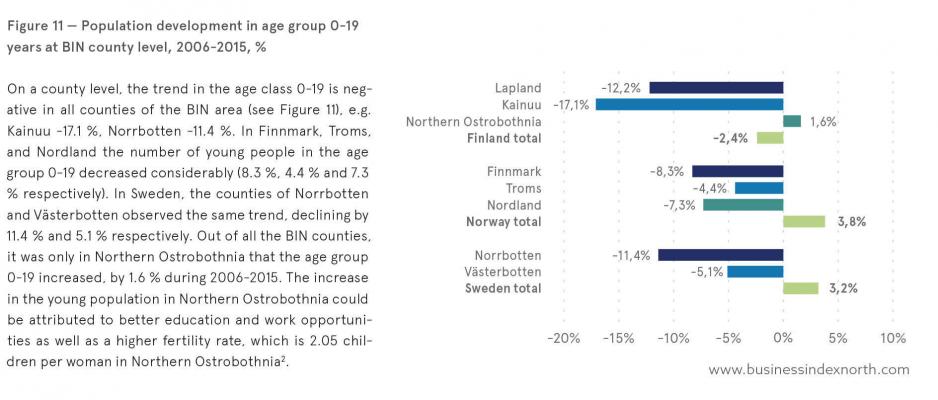
In Northern Norway, the proximity to the coast and the ocean is a big advantage. Northern Norway has seen a growth of 80 percent through the past decade if one measures the value of the products. The equivalent number for Sweden was 40 percent, in Finland 20 percent.
The excellent result for Northern Norway is among others due to the fact that there has been a significant creation of new business, both based on existing resources but also on further product development. In Sweden, developments have been more one-sided, and parts of the economy have worked well while others have seen a decrease.
Norway and Sweden have quite different kinds of vulnerability. While fish is the main resource in Norway, minerals and in particular iron ore has traditionally been the economic driver in Northern Sweden.
In Finland, the main resource is technology, and the Norther Ostrobothnia region has a diversified business life working on digital technology, health and communications technology.
This is also reflected in the tables displaying population development, and gender differences in the northern labor market.
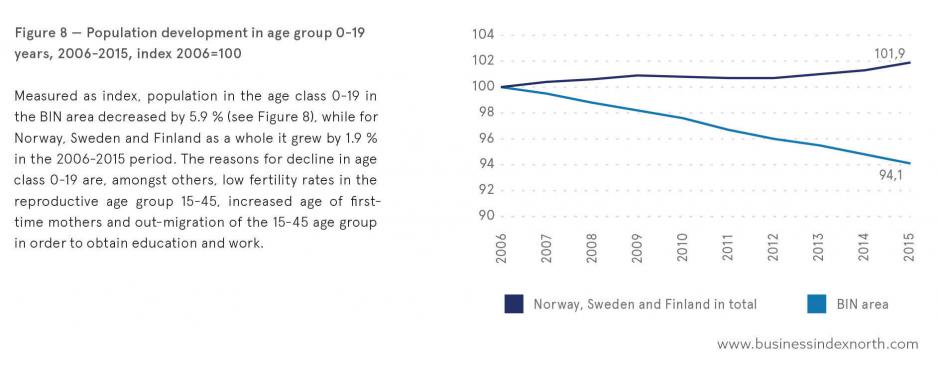
Attractive for women
In Northern Ostrobothnia, there is a larger share of ‘gender neutral’ jobs, which has helped make the region more attractive for women. Labor markets like that exist only in parts of Norway and Sweden, Bullvåg says. He refers to the Finnish region as ‘Nokialand’, an area where the culture for developing new technology and patents is good, which puts them on top of the development in the BIN area.
- Their ‘oil’ is the technological rights they possess, as well as the fact that they have the knowledge it takes to create it.
What is wrong in the north?
For, as he says:
- What is wrong when we cannot make people settle in the North?
The report produces several proposals for both politicians and businesses about what it takes, and Erlend Bullvåg also has his fads:
- It takes two things: A sufficient amount of educated people with an understanding of what we have here, knowledge about it, and technology. Moreover, we need a balanced labor market for men and women. We have great jobs up north, but there are too few of them, he states.
